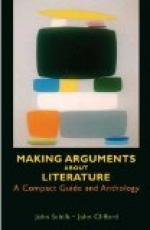in yellow fever, is less than five days; and, third,
because these individuals, having recently arrived
in Havana, were liable to attacks of yellow fever,
or of “acclimation fever” as a result
of their residence in this city and quite independently
of Dr. Finlay’s mosquito inoculations. For
these reasons Dr. Finlay’s experiments failed
to convince the medical profession generally of the
truth of his theory relating to the transmission of
yellow fever, and this important question remained
in doubt and a subject of controversy. One party
regarded the disease as personally contagious and
supposed it to be communicated directly from the sick
to the well, as in the case of other contagious diseases,
such as smallpox, scarlet fever,
etc. Opposed
to this theory was the fact that in innumerable instances
nonimmune persons had been known to care for yellow-fever
patients as nurses, or physicians, without contracting
the disease; also the fact that the epidemic extension
of the disease depends upon external conditions relating
to temperature, altitude, rainfall,
etc.
It was a well-established fact that the disease is
arrested by cold weather and does not prevail in northern
latitudes or at considerable altitudes. But diseases
which are directly transmitted from man to man by
personal contact have no such limitations. The
alternate theory took account of the above-mentioned
facts and assumed that the disease was indirectly
transmitted from sick to well, as is the case in typhoid
fever and cholera, and that its germ was capable of
development external to the human body when conditions
were favorable. These conditions were believed
to be a certain elevation of the temperature, the
presence of moisture and suitable; organic pabulum
(filth) for the development of the germ. The two
first-mentioned conditions were known to be essential,
the third was a subject of controversy.
Yellow fever epidemics do not occur in the winter
months in the temperate zone and they do not occur
in arid regions. As epidemics have frequently
prevailed in seacoast cities known to be in an insanitary
condition, it has been generally assumed that the presence
of decomposing organic material is favorable for the
development of an epidemic and that, like typhoid
fever and cholera, yellow fever is a “filth
disease.” Opposed to this view, however,
is the fact that epidemics have frequently occurred
in localities (e.g. at military posts) where no local
insanitary conditions were to be found. Moreover,
there are marked differences in regard to the transmission
of the recognized filth diseases—typhoid
fever and cholera—and yellow fever.
The first-mentioned diseases are largely propagated
by means of a contaminated water supply, whereas there
is no evidence that yellow fever is ever communicated
in this way. Typhoid fever and cholera prevail
in all parts of the world and may prevail at any season
of the year, although cholera, as a rule, is a disease
of the summer months. On the other hand, yellow
fever has a very restricted area of prevalence and
is essentially a disease of seaboard cities and of
warm climates. Evidently neither of the theories
referred to accounts for all of the observed facts
with reference to the endemic prevalence and epidemic
extension of the disease under consideration.




